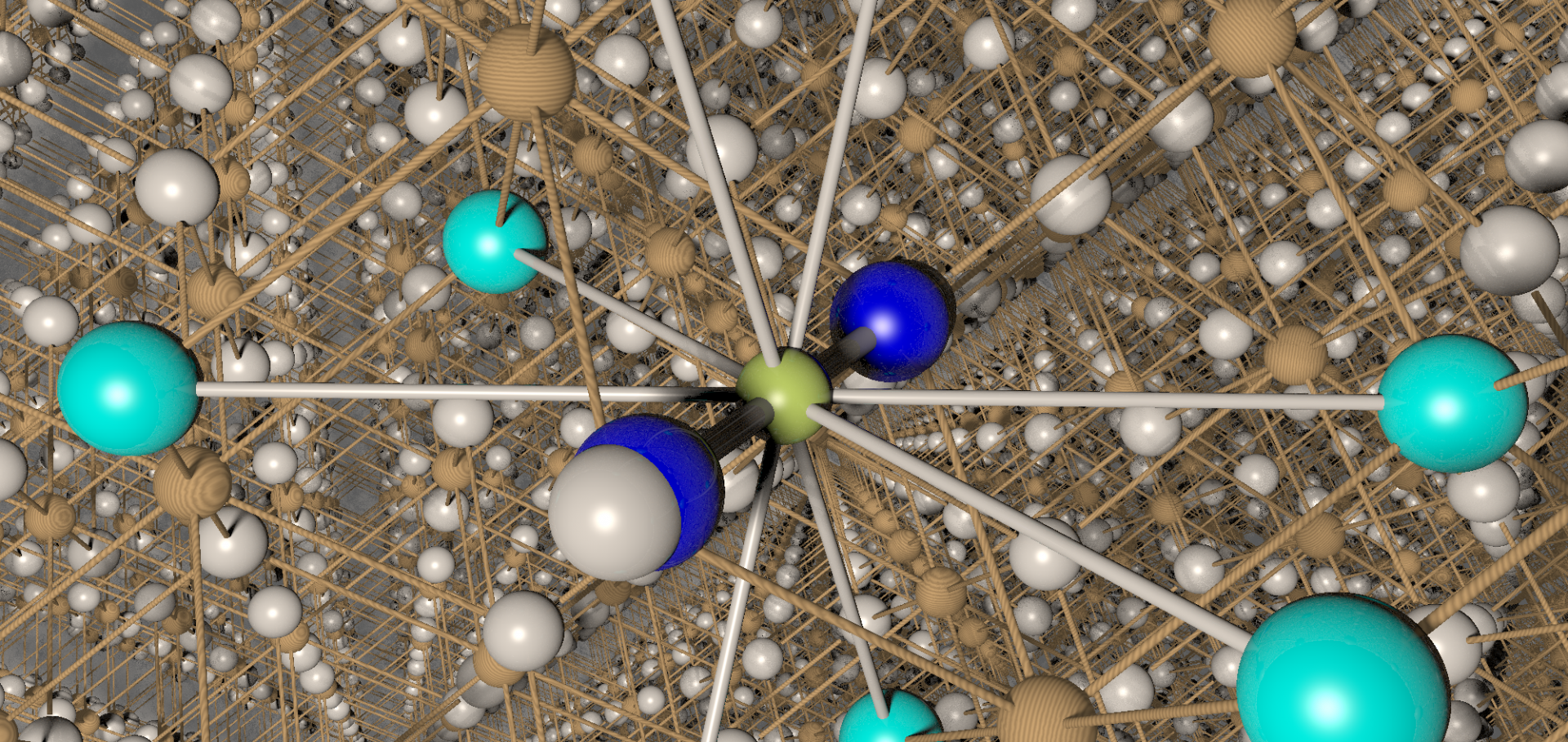Neutron Studies of a High Spin Fe-19 Molecular Nanodisc
MAGNETOCHEMISTRY 7:6 (2021) ARTN 74
Abstract:
The molecular cluster system [Fe19 (metheidi)10 (OH)14O6 (H2O)12 ]NO3·24H2O, abbrevi-ated as Fe19, contains nineteen Fe(III) ions arranged in a disc-like structure with the total spin S = 35/2. For the first order, it behaves magnetically as a single molecule magnet with a 16 K anisotropy barrier. The high spin value enhances weak intermolecular interactions for both dipolar and superexchange mechanisms and an eventual transition to antiferromagnetic order occurs at 1.2 K. We used neutron diffraction to determine both the mode of ordering and the easy spin axis. The observed ordering was not consistent with a purely dipolar driven order, indicating a significant contribution from intermolecular superexchange. The easy axis is close to the molecular Fe1–Fe10 axis. Inelastic neutron scattering was used to follow the magnetic order parameter and to measure the magnetic excitations. Direct transitions to at least three excited states were found in the 2 to 3 meV region. Measurements below 0.2 meV revealed two low energy excited states, which were assigned to S = 39/2 and S = 31/2 spin states with respective excitation gaps of 1.5 and 3 K. Exchange interactions operating over distances of order 10 Å were determined to be on the order of 5 mK and were eight-times stronger than the dipolar coupling.Intrinsic nature of spontaneous magnetic fields in superconductors with time-reversal symmetry breaking
(2021)
The Internal Field in a Ferromagnetic Crystal with Chiral Molecular Packing of Achiral Organic Radicals
MAGNETOCHEMISTRY 7:5 (2021) ARTN 71
Abstract:
The achiral organic radical dinitrophenyl nitronyl nitroxide crystallizes in two enan-tiomorphs, both being chiral tetragonal space groups that are mirror images of each other. Muon-spin rotation experiments have been performed to study the magnetic properties of these crystals and demonstrate that long-range magnetic order is established below a temperature of 1.10(1) K. Two oscil-latory components are detected in the muon data, which show two different temperature dependences.Magnetic and Structural Properties of Organic Radicals Based on Thienyl- and Furyl-Substituted Nitronyl Nitroxide
MAGNETOCHEMISTRY 7:5 (2021) ARTN 62
Abstract:
Magnetic properties of organic radicals based on thienyl-and furyl-substituted nitronyl nitroxide (NN) and iminonitroxide (IN) were investigated by measuring the temperature dependence of the magnetization. The magnetic behavior of 2-benzo[b]thienyl NN (2-BTHNN) is interpreted in terms of the two-magnetic-dimer model, in which one dimer exhibits ferromagnetic (FM) intermolecular interaction and the other dimer shows antiferromagnetic (AFM) interaction. The existence of two dimers in 2-BTHNN is supported by crystal structure analysis. The magnetic behaviors of 2-bithienyl NN, 4-(2′-thienyl)phenyl NN (2-THPNN), 2-and 3-furyl NN, 2-benzo[b]furyl NN, and 3-benzo[b]thienyl IN are also reported. The one-dimensional alternating AFM nature observed in 2-THPNN is consistent with its crystal structure.Studies on Novel Yb-based Candidate Triangular Quantum Antiferromagnets: Ba3YbB3O9 and Ba3YbB9O18
(2021)


